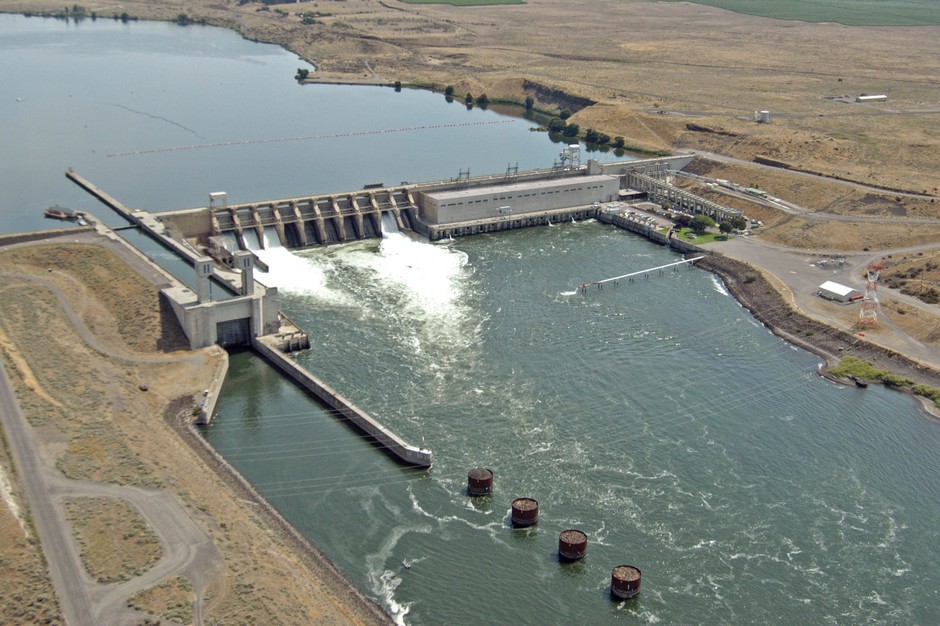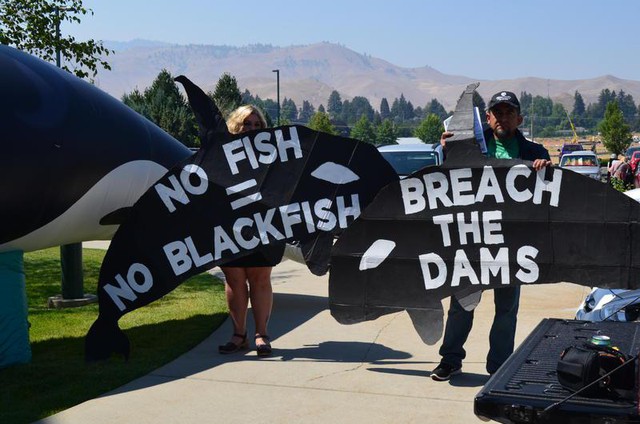
Dams Vs. Salmon: Workshops Aim To Get Past ‘My Study Can Beat Up Your Study’ On Snake River
Listen
Salmon need our help, but solutions aren’t going to come easy. That was the common thought from speakers Tuesday night in Clarkston, Washington.
The panel kicked off the first of three workshops to discuss issues that bog down the fate of four lower Snake River dams in Washington.
More than 300 people showed up to hear speakers talk about why it’s important to either keep or alter the dams. The panel stems from a Washington state study that will guide the state’s position on dam removal.
David Johnson, a member of the Nez Perce Tribe headquartered in nearby Lapwai, Idaho, said one of the biggest issues for the tribe is to have access to treaty fishing rights – a promise he says has not been kept.
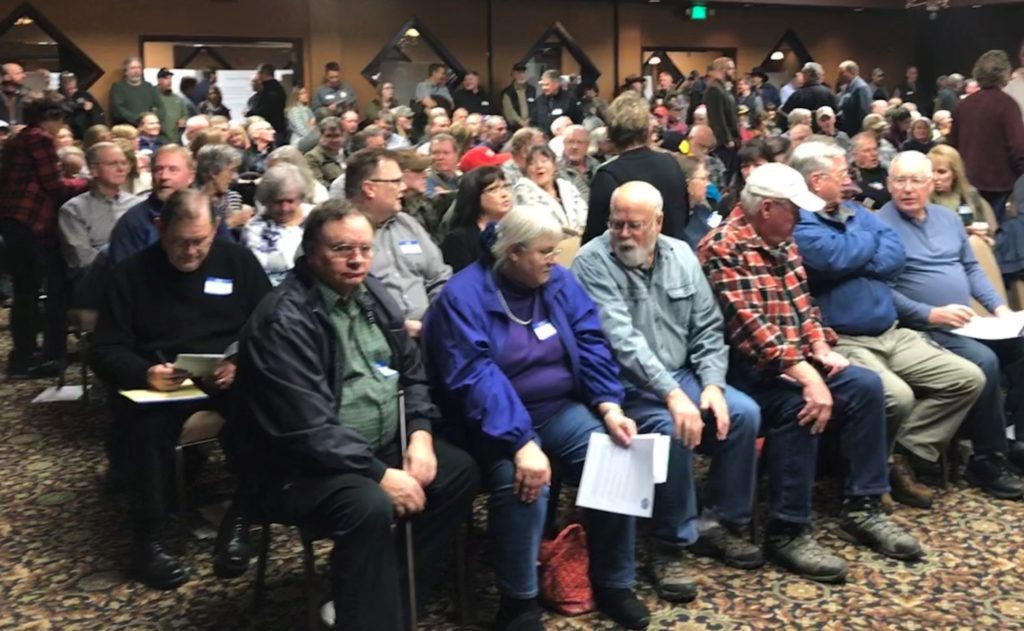
More than 300 people gathered in Clarkston, Washington Jan. 7, 2020 to hear perspectives on the lower Snake River dams. Ultimately a decision on their fate is up to Congress. CREDIT: Courtney Flatt/NWPB
“What really has been important is that some livelihoods have always been held as sacrosanct; whereas others have not been so, specifically with regards to tribes and the ability to harvest fish,” Johnson said.
Other panelists said it doesn’t have to be a choice of dams or salmon – that there could be ways to make both work. But, advocating for dam removal, Nez Perce members say a lot has been tried so far, without much success.
Dustin Aherin is an outfitter who guides trips that rely on Snake River salmon. He said people need to move beyond prickly attacks and work together to find a solution.
“We haven’t gotten very far into the recovery process by arguing with one another, and by developing different plans, saying my study can beat up your study,” Aherin said.
Dam advocates say the structures are integral to agriculture and the West’s most inland port in the Lewiston-Clarkston Valley. Those who want the dams breached say they’re standing in the way of healthier salmon runs.
Task Force
In 2018, Washington Gov. Jay Inslee convened a task force to find ways to save the dwindling orca population in Puget Sound and off Northwest coasts. Controversially, the group requested a report on the Snake River dams. It would look at people’s feelings about removing or altering them. It wouldn’t make a recommendation one way or the other.

File photo. Protesters call for the removal of dams on the Snake River to help salmon spawn — and consequently feed Puget Sound orcas. The protest came outside a meeting of the governor’s orca task force in Wenatchee.
CREDIT: Eilis O’Neill/KUOW
Of the draft report, Inslee said in a statement: “I thank all the stakeholders from all over the state for weighing in on this crucial issue. I encourage Washingtonians to get engaged in the public comment period over the next month and share their input on what should be done. We need to hear from a variety of people from different regions and perspectives.”
Two more public workshops will take place soon: Thursday, Jan. 9 in Vancouver, Washington, and Monday, Jan. 13 in Pasco.
People can comment on the report through Jan. 24.
Washington’s report is separate from an environmental analysis by the federal government due out sometime this year. Removing or altering the dams would be up to Congress.
Courtney Flatt covers environmental and natural resource issues for Northwest Public Broadcasting. She is based in Washington’s Tri-Cities. On Twitter: @courtneyflatt
Related Stories:
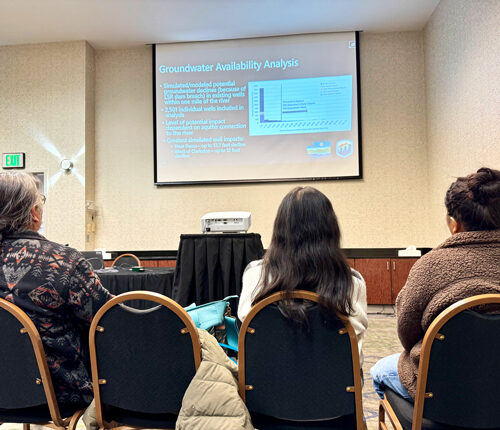
Snake River water, recreation studies look at the river’s future
People listen to an introductory presentation on the water supply study findings at an open house-style meeting in Pasco. After they listened to the presentation, they could look at posters
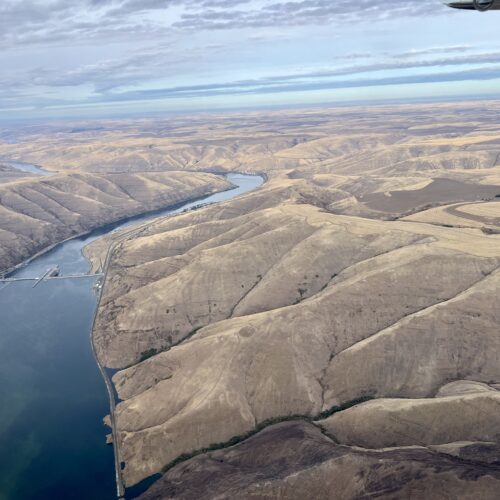
Toxic algal bloom found on the Snake River for second year in a row
Blue-green algae seen behind Lower Granite dam on the Snake River in 2023. (Credit: Courtney Flatt / NWPB) Watch Listen Toxic algae is turning up once again on the Snake
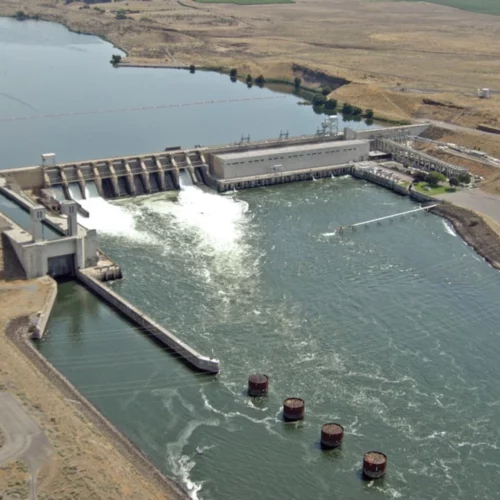
Historic agreement seen as a harbinger to Snake River dam removal
Ice Harbor Dam on the Snake River. Gov. Jay Inslee and U.S. Sen. Patty Murray said removing the four dams on the Lower Snake isn’t feasible right now. CREDIT: Bonneville

